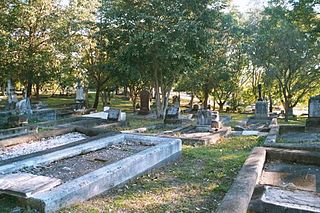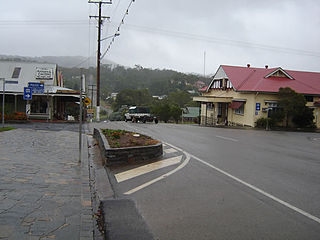
Fortitude Valley is a suburb of central Brisbane, the state capital of Queensland, Australia. The suburb lies immediately northeast of the Brisbane central business district, and is one of the hubs of Brisbane's nightlife, renowned for its nightclubs, bars and adult entertainment. At the 2016 Australian Census Fortitude Valley recorded a population of 6,978. In the 1950s, the suburb was the largest shopping precinct outside a central business district in Australia.

Woolloongabba is a suburb of Brisbane, Australia. It is located 2 kilometres (1.2 mi) south-east of the CBD, and contains the Brisbane Cricket Ground and the Princess Alexandra Hospital. It is crossed by several major roads including the Pacific Motorway. The suburb was once home to a large tram depot.
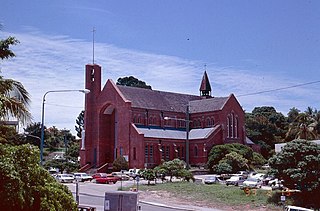
St James Cathedral is a heritage-listed cathedral of the Anglican Diocese of North Queensland at 36 Cleveland Terrace, Townsville, City of Townsville, Queensland, Australia. It was designed by Arthur Blacket and was built in 1887 by MacMahon & Cliffe. It was added to the Queensland Heritage Register on 21 October 1992.
Thomas Pye was an Australian architect. He worked for over 33 years in the Public Works Department in Queensland. Pye contributed significantly to major buildings including the completion of the Public Offices and Rockhampton Customs House, as well as the design for the Lands and Survey Offices. He was responsible for the heightened expectations which produced the best public buildings yet seen in Queensland.
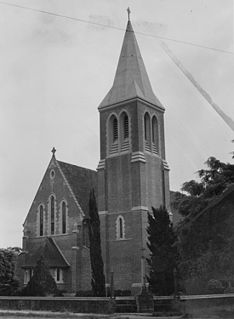
John H. Buckeridge (1857–1934) was an English-born Australian architect, who built about sixty churches in Queensland and is also remembered for remodelling the interior of the Macquarie era church of St James', King Street, Sydney.
Andrea Giovanni Stombuco (1820-1907) was an Italian-born Australian sculptor and architect. Many of the buildings he designed are listed on the heritage registers in Australia.

Holy Trinity Parish Hall is a heritage-listed Anglican church hall at 141 Brookes Street, Fortitude Valley, City of Brisbane, Queensland, Australia. It was designed by John Hingeston Buckeridge and built from 1891 to 1892 by John Quinn. It was added to the Queensland Heritage Register on 21 October 1992.
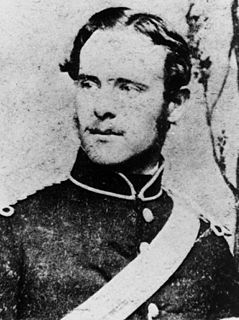
Francis Drummond Greville Stanley (1839—1897) was an architect in Queensland, Australia. He was the Queensland Colonial Architect. Many of his designs are now heritage-listed buildings.

Holy Trinity Rectory is a heritage-listed Anglican clergy house at 141 Brookes Street, Fortitude Valley, City of Brisbane, Queensland, Australia. It was designed by Francis Drummond Greville Stanley and built in 1889 by James Robinson. It was added to the Queensland Heritage Register on 21 October 1992.
John Beauchamp Nicholson was an architect in Brisbane, Queensland, Australia. A number of his works are heritage-listed.
Eaton & Bates was an architectural partnership in Queensland, Australia which built up a substantial Queensland practice from c. 1894-c. 1908. From 1901, it was known as Eaton, Bates & Polin. Many of their works are now heritage-listed.
Albert Edmund Bates (1862—1929) was an Australian architect. Many of his works are notable; some are heritage-listed.
Richard George Suter (1827–1894) was an architect in Queensland, Australia. Many of his buildings are now heritage-listed.
Claude William Chambers (1861–1947) was a prominent architect in Brisbane, Queensland and Sydney, New South Wales in Australia. Many of his works are listed on the Queensland Heritage Register.

Alfred Barton Brady was an engineer and architect in Queensland, Australia. He was one of Queensland's most important early engineers and was particularly known for his bridge design. He was the Queensland Colonial Architect and many of his buildings and structures are now heritage-listed.
Harold Vivian Marsh Brown (c.1907-1992) was an Australian architect, practising in Mackay, Queensland. Some of his works are now heritage-listed.

Townsville School of Arts is a heritage-listed former school of arts and now community cultural centre at Stanley Street, Townsville CBD, City of Townsville, Queensland, Australia. It was designed by Eyre & Munro and built in 1891 by James Smith. It is also known as Dance North and Townsville Arts Centre. It was added to the Queensland Heritage Register on 21 October 1992.

Cyclone Sigma was a tropical cyclone that caused severe damage in North Queensland, Australia on 26–27 January 1896.
Eyre & Munro was an architectural partnership in Townsville, Queensland, Australia. A number of their works are now heritage-listed.




